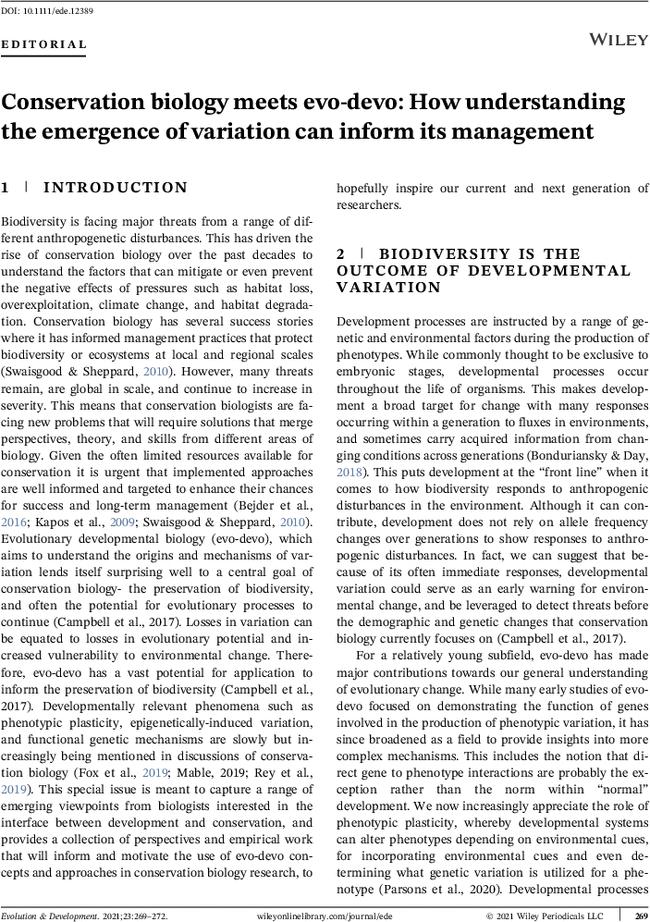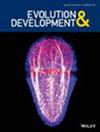Conservation biology meets evo-devo: How understanding the emergence of variation can inform its management
IF 2.6
3区 生物学
Q2 DEVELOPMENTAL BIOLOGY
引用次数: 1
Abstract
Biodiversity is facing major threats from a range of different anthropogenetic disturbances. This has driven the rise of conservation biology over the past decades to understand the factors that can mitigate or even prevent the negative effects of pressures such as habitat loss, overexploitation, climate change, and habitat degradation. Conservation biology has several success stories where it has informed management practices that protect biodiversity or ecosystems at local and regional scales (Swaisgood & Sheppard, 2010). However, many threats remain, are global in scale, and continue to increase in severity. This means that conservation biologists are facing new problems that will require solutions that merge perspectives, theory, and skills from different areas of biology. Given the often limited resources available for conservation it is urgent that implemented approaches are well informed and targeted to enhance their chances for success and long‐term management (Bejder et al., 2016; Kapos et al., 2009; Swaisgood & Sheppard, 2010). Evolutionary developmental biology (evo‐devo), which aims to understand the origins and mechanisms of variation lends itself surprising well to a central goal of conservation biology‐ the preservation of biodiversity, and often the potential for evolutionary processes to continue (Campbell et al., 2017). Losses in variation can be equated to losses in evolutionary potential and increased vulnerability to environmental change. Therefore, evo‐devo has a vast potential for application to inform the preservation of biodiversity (Campbell et al., 2017). Developmentally relevant phenomena such as phenotypic plasticity, epigenetically‐induced variation, and functional genetic mechanisms are slowly but increasingly being mentioned in discussions of conservation biology (Fox et al., 2019; Mable, 2019; Rey et al., 2019). This special issue is meant to capture a range of emerging viewpoints from biologists interested in the interface between development and conservation, and provides a collection of perspectives and empirical work that will inform and motivate the use of evo‐devo concepts and approaches in conservation biology research, to hopefully inspire our current and next generation of researchers.

保护生物学与进化:如何理解变异的出现可以为其管理提供信息
本文章由计算机程序翻译,如有差异,请以英文原文为准。
求助全文
约1分钟内获得全文
求助全文
来源期刊

Evolution & Development
生物-发育生物学
CiteScore
6.30
自引率
3.40%
发文量
26
审稿时长
>12 weeks
期刊介绍:
Evolution & Development serves as a voice for the rapidly growing research community at the interface of evolutionary and developmental biology. The exciting re-integration of these two fields, after almost a century''s separation, holds much promise as the focus of a broader synthesis of biological thought. Evolution & Development publishes works that address the evolution/development interface from a diversity of angles. The journal welcomes papers from paleontologists, population biologists, developmental biologists, and molecular biologists, but also encourages submissions from professionals in other fields where relevant research is being carried out, from mathematics to the history and philosophy of science.
 求助内容:
求助内容: 应助结果提醒方式:
应助结果提醒方式:


